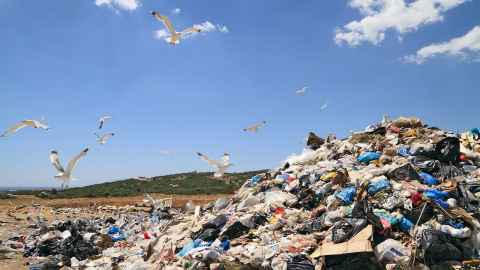The key to controlling landfill emissions
6 July 2021
Opinion: Saeid Baroutian argues we must put technology and innovation front and centre if we want to find NZ-specific solutions for capturing of landfill gas.

New Zealand must invest more in innovation and technologies of the future to meet the Climate Change Commission recommendations to increase the capture of landfill gas (LFG), the gas created from decaying organic waste.
Methane is the primary component of LFG. It is a potent greenhouse gas; it traps heat in the atmosphere and is much more aggressive than carbon dioxide. The warming power of methane means the uncontrolled release of LFG into the atmosphere can create serious problems by contributing to global climate change, plus, on a more local level, can cause fire and odours.
The recommendation to cut waste and landfill emissions and increase LFG capture was contained in the commission’s final report to Government which was tabled in Parliament last week.
The good news is that, although landfilling is still one of the critical components of an integrated solid-waste-management strategy, reducing waste emission can be achieved through a balanced combination of waste management and LFG capture.
There are already different strategies available that can be used to increase the amount of methane that is captured. For example, installing new LFG capture systems in new or existing landfills and upgrading old LFG capture systems can minimise the uncontrolled release of landfill methane into the atmosphere. Many landfills in New Zealand have installed gas capture systems, but not all are efficient.
We can also improve LFG production efficiency in landfills, increasing the quantity of recoverable landfill gas over time while maintaining a relatively high level of methane concentration which is crucial for conversion to usable energy.
Innovations such as bioreactor landfills contribute to this strategy by using moisture to speed up the process of breaking down the waste, and additives to maximise landfill gas production. These processes increase the rate of waste decomposition that can be applied for energy recovery and emission reduction. For a local example of innovation use, resource recovery company EnviroNZ is using moisture adjustment and additive techniques on landfill sites but so far there is no modern bioreactor landfill in New Zealand.
Adding value to LFG through upgrading so it converts into a reliable source of energy is another vital consideration. Raw LFG has a methane content (40-60 percent) and contains impurities and trace gases such as hydrogen sulphide, siloxanes, and other volatile organic compounds.
It needs to go through a series of steps to be converted into Renewable Natural Gas (RNG), a high-quality fuel with around 90 percent methane, and suitable for use in the power generation, industrial, domestic, and transport sectors. For example, replacing diesel fossil fuel use in waste collection trucks with RNG can reduce transport emissions in the waste management industry, leading the industry to net-negative carbon intensity.
One of the main advantages of RNG is that it can be used in existing gas infrastructure. This makes it a cost-effective option, especially for industrial heavy-duty combustion and heating systems.
LFG’s heating value is about half that of natural gas because it contains less methane. That means the volume of LFG that must be transported and handled by the burner is twice that of natural gas. Upgrading LFG to RNG will minimise the net carbon emission. Once compressed or liquefied, RNG can be used in natural gas vehicles without any modifications to engines or fuel systems
I want to emphasise the role of research and innovation in reducing waste emission. Technology innovation is increasingly seen as a critical driver to reducing greenhouse gas emissions in developed countries. New Zealand should not be exempt from this. Climate change policy and investments in New Zealand should be coordinated with careful thought about research and technology innovation's role in reducing emissions. For success, effort must catalyse the scientific and technological expertise of industry, universities, and government agencies.
EnviroNZ’s Hampton Downs Power and Resource Recovery Centre, for instance, has been successful in maximising gas extraction from residual waste and capturing it through an innovative approach. This is achieved through a close research collaboration with the University of Auckland.
The New Zealand Government can play a significant role here. For example, increasing funding intensity and subsidised research and development (R&D) by private companies and supporting universities and research institutes can bridge the innovation gaps and lower the capital and investment risks in new technologies. Independent academic research can also provide government and industry with access to data and knowledge and reduce information gaps between both.
Effective application of government enforcement of existing regulations will help ensure innovation and technologies across the waste management and landfilling sector. We cannot see significant improvements in waste emission reduction if regulatory enforcement is relaxed. Moreover, new policies that encourage innovation and advanced technology development can lead to breakthroughs that could transform New Zealand's waste management sector.
The synergies between enforcement, incentives and increased research and development will help shape the optimal technological solutions that work for New Zealand.
Associate Professor Saeid Baroutian is from the Faculty of Engineering.
This article reflects the opinion of the author and not necessarily the views of the University of Auckland.
Used with permission from Newsroom The key to controlling landfill emissions 6 July 2021.
Media queries
Alison Sims | Research Communications Editor
DDI 09 923 4953
Mob 021 249 0089
Email alison.sims@auckland.ac.nz